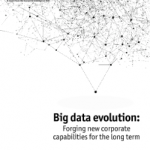 People often seek out our company for guidance related to master data management, data governance and data quality. But I see a frequent pattern, where the customer presumes that they need a particular data management solution – even if there is no specific data management problem. This approach is often triggered in reaction to some management directive at the company, like “Move everything to Hadoop,” or “We need to be doing analytics.” It leads to the initiation of a series of projects for designing and building components or infrastructure (such as a master data management system, a data governance council or a metadata repository).
People often seek out our company for guidance related to master data management, data governance and data quality. But I see a frequent pattern, where the customer presumes that they need a particular data management solution – even if there is no specific data management problem. This approach is often triggered in reaction to some management directive at the company, like “Move everything to Hadoop,” or “We need to be doing analytics.” It leads to the initiation of a series of projects for designing and building components or infrastructure (such as a master data management system, a data governance council or a metadata repository).
The problem in many of these cases is that there are no well-defined business problems motivating the need for new infrastructure design and development. These projects spin up, someone starts an acquisition process to select a vendor, and tools are tested, selected – and even installed in the data center – before anyone realizes that nobody knows what to do with them.
Our approach is to take a step back. We like to reassess the business problems and opportunities that motivated changes in the ways information is managed. Identifying the business needs helps because:
- It clarifies what the business is trying to achieve and discretely links it to information use – providing business justification for a data strategy.
- It helps establish criteria to be used in evaluating how well any proposed solution meets business needs – providing metrics for monitoring progress and success.
- It allows you to identify the key stakeholders who will most benefit from the data strategy – providing champions for the program.
In effect, the first phase of developing a data strategy is establishing its business case. That can be done by walking backwards through our list of benefits:
- Identify the business data consumers.
- Assess their data consumption expectations and needs.
- Determine what their “burning platform” issues are and prioritize those in terms of corporate business direction.
- Document the existing data management landscape and map each data asset to its user community.
- Evaluate how gaps in the existing data management environment impede the achievement of the stakeholders’ business objectives.
- Quantify the degree to which these gaps impact the corporate bottom line.

This high-level sequence of steps will help identify the business drivers for the data strategy and the areas of the existing environment that are the sources of the most critical issues. It will also provide overall guidance for prioritizing areas for remediation. Most importantly, devising a business justification for the data strategy suggests the business metrics to use in measuring success. In turn, this business justification can be used to assert levels of data management capability that are necessary to meet business needs.

